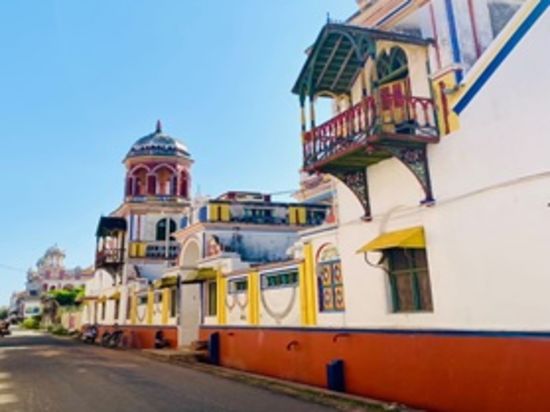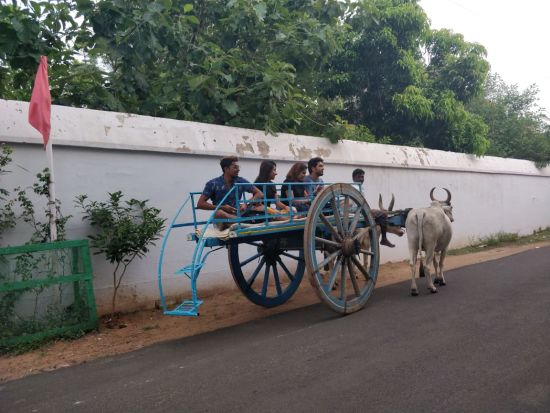
Tour of the Mansion
Chidambara Vilas is a 120 years old mansion built between 1897 and 1904. A guided tour of this house will give you an insight of Chettinad history and also you will be taken to each part of the mansion to understand the lifestyle of Chettiar community.

Heritage Village Walk
A morning walk around the Kadiapatti village where Chidambara Vilas is located to see the architecture of Chettinad mansions built in 18 and 19th Century.

Bullock Cart Ride
We will take the guests in a real bullock cart for a show around of the village.

Garland Making
Flowers play a very important role in the Chettinad culture and indeed in the way of life all over South India. Flowers are used for every auspicious occasion, in particular among the Hindu community. Only selected flowers and fresh flowers are used. Aromatic flowers are used to lend a fragrance to the place of the occasion, whether it's worship or a community event. The flowers are used mainly in the form of garlands and this has evolved into an art form over the past centuries. Some flowers used are jasmine, champaka, lotus, lilies, ashoka, nerium/oleander, chrysanthemum, roses, hibiscus, pinwheel flowers and manoranjitam.

Cookery Classes
The world famous Chettinad cooking originated in this region and visitors to Chidambara Vilas have the opportunity of joining local Chefs in preparation of the cuisine. Whether it's to watch and take notes or to participate hands on, it's a chance to understand the authentic roots of the unique cuisine cooked with ingredients local to the region. Visitors can also quiz the Chefs on tips and tricks to create the perfect Chettinad dish and discover some lesser-known dishes from the vast number of options available from starters to desserts.

Kolam
Drawing kolams is a tradition practiced in Chettinad homes as a sign of good luck and prosperity. It is intended to welcome the Hindu goddess of wealth – Goddess Lakshmi. The kolam is drawn at the entrance to the house or the gate. It is drawn with the bare hands and using ground rice. There are also various colored powders used in the design. The colored powders are mixed with sand to lend a texture and shimmer. Designing a kolam is a work of art, including the border design, choice of colours and the actual execution.